In this recipe, we create and set up the transition for the character to switch between the Idle and Jump animation clips. For this task, we also need a parameter, which we will call bJump, to trigger the jump animation through code.
We will build on the previous recipe. Have the Animator window open, and be ready to follow our instructions.
- As you move to the Animator panel in Unity, you should see a orange box representing the Idle animation, from our previous recipe. If it is not, right-click on it, and from the menu, select Set As Default. You can refer to the following screenshot:
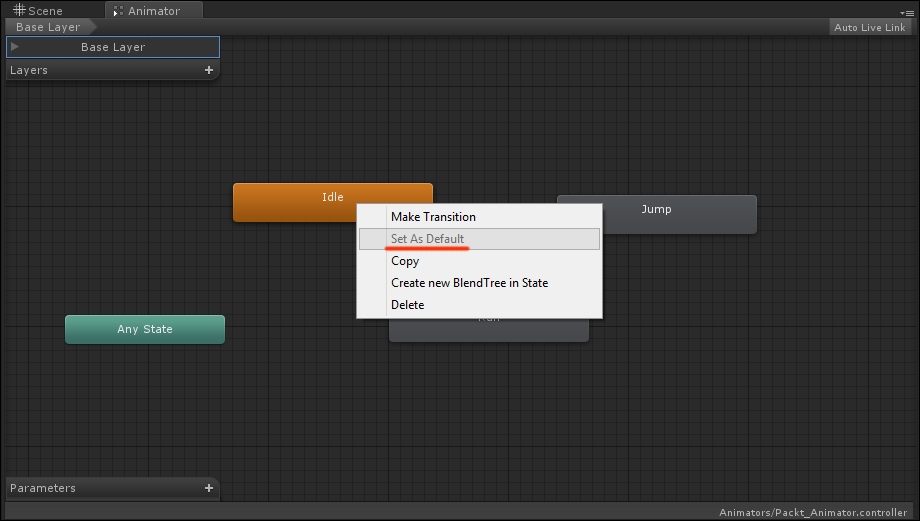
- Right-click on the Idle clip and select Make Transition from the menu, as shown in the following screenshot:
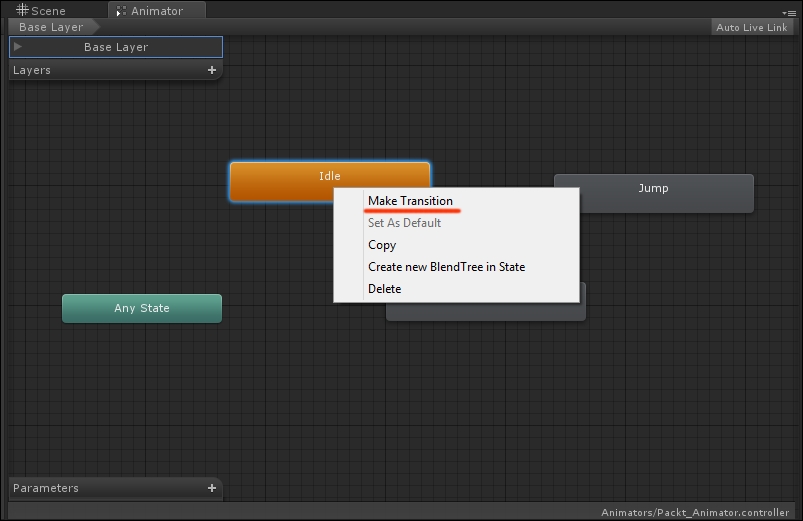
- Drag the arrow that appears onto the Jump clip and click to create the transition. It should appear in the Inspector window, to the right of the Animator window. Check the following screenshot to see whether you did it right:

- Now that we have got the transition, we need a parameter to switch between Idle and Jump. We use a
booleantype for this, so we first need to create it. In the bottom-left corner of the Animator window, click on the small +, and from the menu that appears, select Bool, as shown in the following screenshot: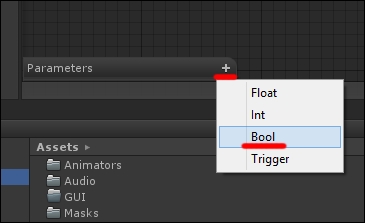
- Name the newly created parameter
bJump(the "b" stands for thebooleantype; it's a good habit to create meaningful variable names). - Click on the white arrow representing the transition to access its properties in Inspector. There, a visual representation of the transition between the two clips is available.
- By checking the Conditions section in Inspector, you can see that the transition is right now controlled by Exit Time, meaning that the Jump clip will be played only after the Idle clip has finished playing. The
0.97value tells us that the transition is actually blending between the two clips for the last 3 percent of the idle animation. For your reference, you can adjust this value if you want to blend it a bit more or a bit less. Please refer to the following screenshot:
- As we want our
bJumpparameter to control the transition, we need to change Exit Time using thetJumpparameter. We do that by clicking on the drop-down menu on Exit Time and selectingtJumpfrom the menu, as shown in the following screenshot: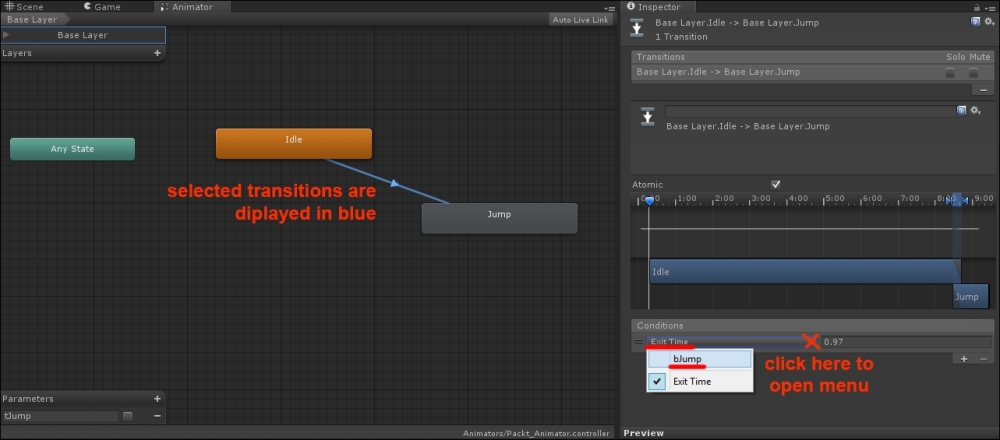
- Note that it is possible to add or remove conditions by acting on the small + and - buttons in the interface if you need extra conditions to control one single transition. For now, we just want to be sure that the Atomic option is not flagged in the Inspector panel. The Atomic flag interrupts an animation, even if it has not finished playing yet. We don't want that to happen; when the character jumps, the animation must get to its end before playing any other clip.
The following screenshot highlights these options we just mentioned:
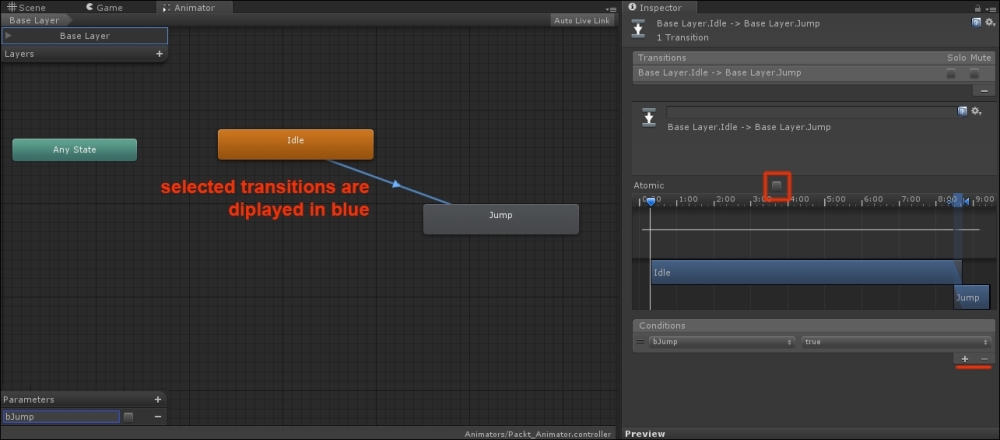
..................Content has been hidden....................
You can't read the all page of ebook, please click here login for view all page.
